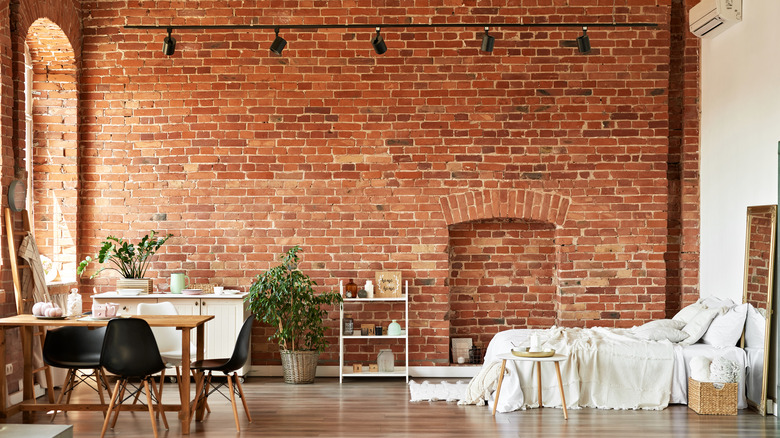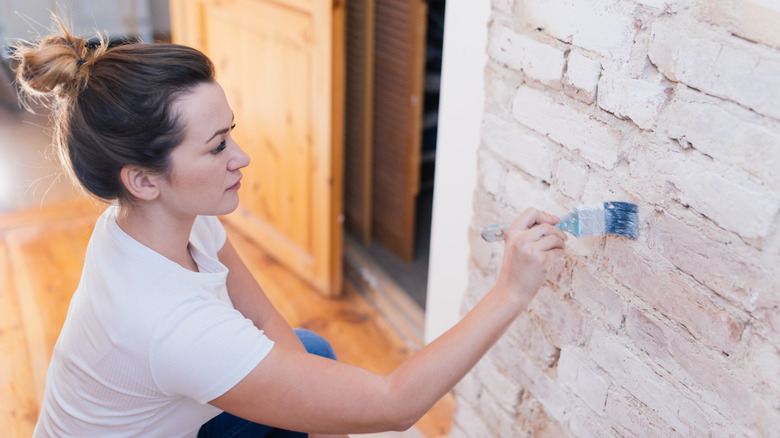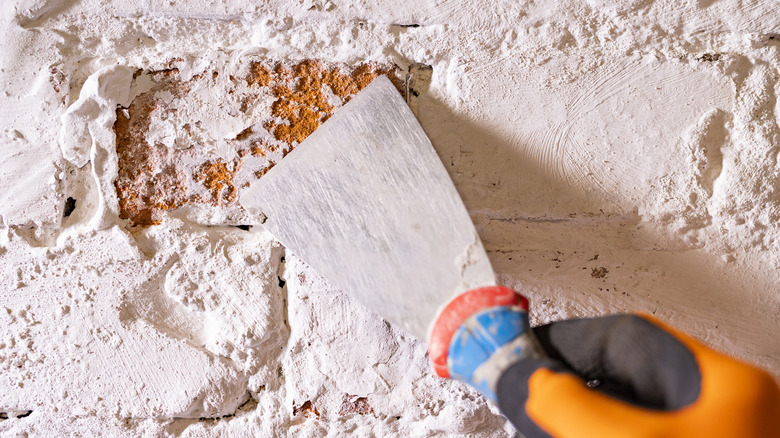How To Restore Painted Brick To Its Former Glory
House flipping can be a great way to get a good ROI and make homes more appealing to buyers. But if you are a buyer, chances are a flipped house may come with a few renovations you would have rather seen left undone. Sure, updated kitchen appliances, a new roof, or updated HVAC and electrical systems could all be things to look out for in a flip house, but some aesthetic amenities may actually become an eyesore, depending on your personal style. Painted brick, while popular, is a controversial home upgrade. Some homeowners say that painted brick is a timeless, classic update that can really enhance a home's appeal. Others, however, argue that it ruins the natural features that give the house its charm and character.
While no grand conclusion has been made, those who adore natural exposed brick have tried to combat the painted brick trend by restoring the material to its former glory, a task that can prove to be quite the undertaking. Restoring painted brick to its original state can be done by professionals, but costs can add up depending on how much brick needs to be restored. However, it's possible to strip the paint yourself using a chemical paint stripper. You will likely need a lot of time and labor to achieve the look you want, plus it's possible the brick won't be fully restored to its original appearance.
Restoring painted brick with paint strippers
To start, you'll need to source the right chemical paint stripper to help loosen the paint from the brick. You could opt for Dumond's test kit, which contains three chemical stripping products: Smart Strip, Smart Strip Pro, and Peel Away. Or, follow the lead of TikTok user @kayleifleming, who used Klean Strip premium paint stripper to remove paint from a brick fireplace, while another (@shellydoesdiy) used a nontoxic paint stripper called GreenEz. You may need to try a few samples to see what works best for you.
Next, prep your work area by laying down a tarp or plastic sheet to catch any paint chippings or chemicals. Follow the instructions on the paint stripper, which usually involve using a brush to paint the chemical stripper on the brick, covering it, and allowing it to rest for at least 24 hours. You may need a few coats to get most of the paint stripped away. Once that's done, using a wire brush or scrubbing pads, start scrubbing away the paint in the nooks and crannies. A brush attachment on a drill could also help speed up the process. Regardless, keep a spray bottle of water on hand to dampen the area as you scrub the paint and clean up any debris left behind.
Is restoring painted brick worth it?
Is painted brick outdated? What you should know about this trend is that it isn't entirely new. Homeowners have been painting brick since the 1800s to make it more visually appealing. As trends shifted, the 1970s saw more natural brick included in home interiors, often in chocolate brown and reddish tones. By the 2010s, white painted brick entered homes during the farmhouse craze. And today, the vintage revival of '70s styles is seeing more natural exposed brick in its original hue, while some modern farmhouse aesthetics lean toward whitewashed brick. These competing aesthetics have led many to battle over whether brick should or should not be painted when flipping a home. And when it comes to restoring, the same question is on the minds of many homeowners. Is it worth it to restore painted brick if you intend to sell?
The truth is that it may be up to personal preference. According to HGTV's Nate Berkus, one reason to avoid painted brick is that the decision should be based on personal choice rather than what is trendy or what "could" sell. If you're a buyer looking to restore painted brick, you'll need to save up for a professional to remove the paint or dedicate the time, money, and labor to stripping the paint yourself. Note that chemical paint strippers can cost $15 or more per quart. And for large projects and multiple coatings, costs could quickly add up.


